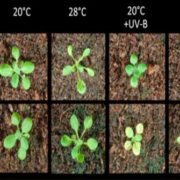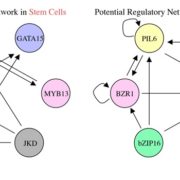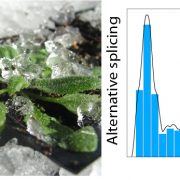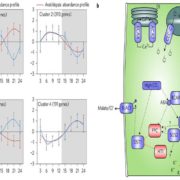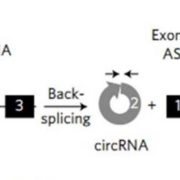Stages of silencing to hold epigenetic memory
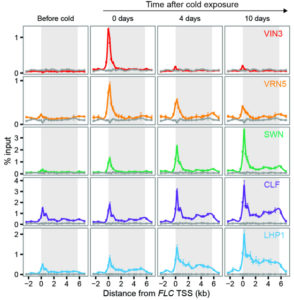 The gene FLC (FLOWERING LOCUS C) is a repressor of flowering in Arabidopsis thaliana. It needs to be silenced after exposure to prolonged cold for plants to be able to flower. The memory of winter leads to changes in the methylation state of Histone 3 associated with FLC in two steps: first by recruiting H3K27m3 (trimethylated H3 on lysine 27) in a nucleation region close to the transcriptional start site of FLC, and then by spreading of H3K27m3 over the entire FLC locus when plants are returned to warm conditions (after experiencing winter). Yang et al. show how key molecular players of the Polycomb Repressive Complex 2—namely VRN2, VIN3, VRN5, CLF, SWN and LHP1—are sequentially required at different stages of FLC silencing. VIN3, VRN2, VRN5 and SWN are required for nucleation of H3K27m3 during cold exposure at the transcriptional start site (also showing reversibility), while LHP1 and CLF are involved in H3K27m3 spreading after cold for long-term stable silencing. DNA replication during cell division impairs the stability of nucleation and is required for spreading of the epigenetic mark along the locus. Stability of the epigenetic state could be observed in cell files in the root, where daughter cells inherit the memory of FLC silencing in cis. Altogether, these results show a dynamic mechanism that could allow for highly plastic responses to environmental changes. (Summary by Gaby Auge) Science 10.1126/science.aan1121
The gene FLC (FLOWERING LOCUS C) is a repressor of flowering in Arabidopsis thaliana. It needs to be silenced after exposure to prolonged cold for plants to be able to flower. The memory of winter leads to changes in the methylation state of Histone 3 associated with FLC in two steps: first by recruiting H3K27m3 (trimethylated H3 on lysine 27) in a nucleation region close to the transcriptional start site of FLC, and then by spreading of H3K27m3 over the entire FLC locus when plants are returned to warm conditions (after experiencing winter). Yang et al. show how key molecular players of the Polycomb Repressive Complex 2—namely VRN2, VIN3, VRN5, CLF, SWN and LHP1—are sequentially required at different stages of FLC silencing. VIN3, VRN2, VRN5 and SWN are required for nucleation of H3K27m3 during cold exposure at the transcriptional start site (also showing reversibility), while LHP1 and CLF are involved in H3K27m3 spreading after cold for long-term stable silencing. DNA replication during cell division impairs the stability of nucleation and is required for spreading of the epigenetic mark along the locus. Stability of the epigenetic state could be observed in cell files in the root, where daughter cells inherit the memory of FLC silencing in cis. Altogether, these results show a dynamic mechanism that could allow for highly plastic responses to environmental changes. (Summary by Gaby Auge) Science 10.1126/science.aan1121


